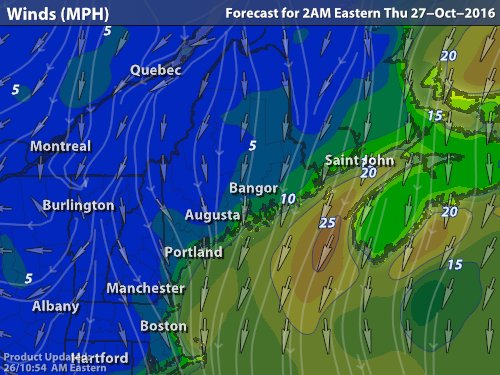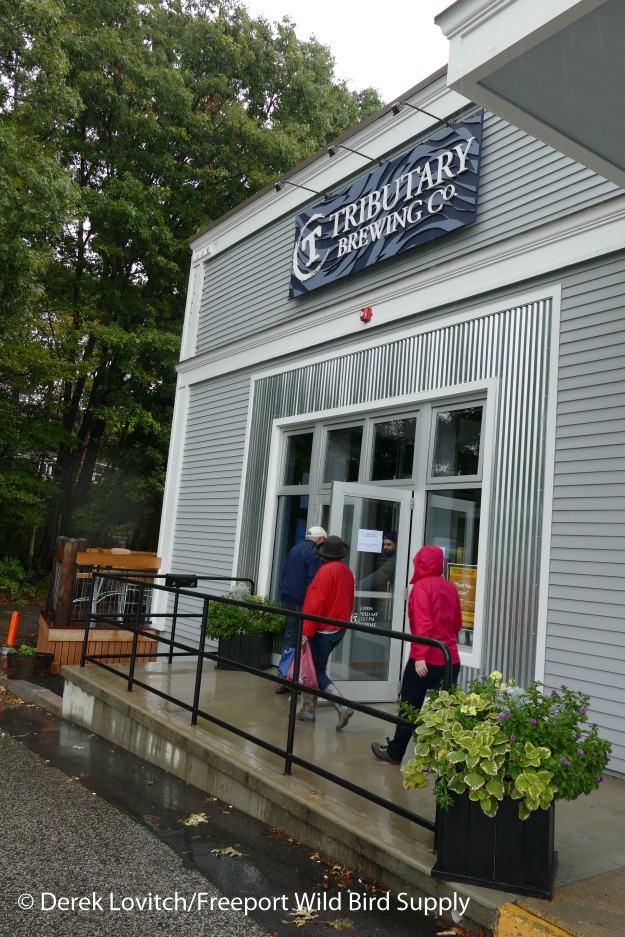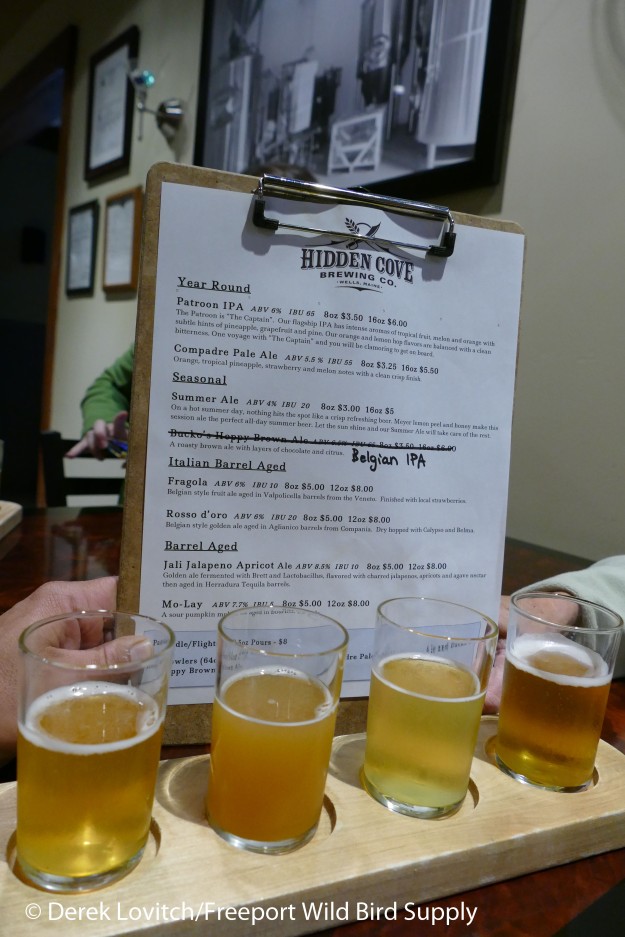I do like a good storm system. Especially as Rarity Season is now upon us! So besides our desperately-needed rain, I was anxious for this weekend’s weathah in the hopes it will set up some action for my favorite time in the birding year.
The winds turned east on Thursday (10/20), and strengthening easterly winds, scattered showers, and developing fog minimized the migration overnight into Friday morning. It was hard to tell from the radar is there was some limited, low movement, which would be indicative of the sparrows that move this time of year. Florida Lake Park was slow in the morning, though, and nothing new was under our feeders at home or at the store, however.
During the day on Friday, a shortwave moved out of the Ohio Valley, and overrunning precipitation fell during the day. By dark, however, that low was deepening and strengthening, and overnight, it tapped tropical moisture, leading to torrential rains, isolated thunderstorm, and by far our best soaker in at least 6 months: 3-6 inches of rain fell over the area! Southeasterly winds turned back to the east before going calm with thickening fog by morning.

Fog and a little drizzle on Saturday morning was all that our Saturday Morning Birdwalk had to contend with on our outing to Wolfe’s Neck Farm; it does seem like there are more Laughing Gulls around later this year than I can ever remember (just the warm weather or are these related to Hurricane Mathew?).
The low slowly moved into the Canada, with an onshore flow (I had hoped for more southwesterlies) throughout the day. On the backside of the system, winds shifted to the west overnight while more rain and showers continued from the afternoon through the first half of the night. Winds were howling west by the morning, and the air definitely felt seasonable for a change.

With the storm system pulling away to the north…

…and the temperatures falling (and even some snowfall was seen in the mountains!) it’s time to really go birding!

On Sunday, Phil McCormack and I headed over Peak’s Island, a place I really want to spend more time searching in the fall. Afterall, it’s a mere 15-minute ferry ride, there are a variety of interesting habitats, and the maritime climate tempers the onset of the seasons a little more. In other words, it looks good for rarities! (And you know I need to seek them somewhere other than Portland now!)
And with my Rarity Fever stoked, a productive morning of scouring the southern 1/3rd of the island yielded the seasonal rare-but-regular stuff that makes one keep coming back: A Clay-colored Sparrow, a Yellow-breasted Chat, and an Orange-crowned Warbler (my second of the season). Add to that single Nashville and Palm Warblers among a total of 6 species of warblers, a fly-by flock of 57 Brant, 8 lingering Red-winged Blackbirds, a good Northern Gannet flight, a Merlin, and recently arrived Red-necked Grebe and 9 Red-breasted Mergansers and you can see why I will be birding here more and more (my once a fall needs to become at least 3-4 visits each season, me thinks).

Not the best photo of a Clay-colored Sparrow (can you find it?) that I have taken!



There wasn’t any migration visible on the radar overnight, but there were southwesterly winds – the direction that can help facilitate the arrival of vagrants to the Northeast. But with winds once again rapidly increasing during the day on Monday, the detection of birds was limited. However, Jeannette and I enjoyed a visit to a particularly productive patch of private property in Cape Elizabeth, where a Blue Grosbeak and a Clay-colored Sparrow that I found last week continued. Dark-eyed Juncos increased to 100+ and White-throated Sparrows were up to 50. Other sparrows had decreased, as expected, but there were still 75 or so Song Sparrows, 6 Chipping, and 2 White-crowned, along with about ten each of Swamp and Savannah. Singleton Indigo Bunting and Common Yellowthroats were both getting late.
With the low pressure system still spinning over the Maritimes, and another shortwave disturbance rotating through, winds remained gusty through the night. Despite the preferred northwest wind (slowly becoming west through the night) there were just not a lot of migrants willing to deal with the winds and likely resultant turbulence overnight. And the winds were gusty and increasing by dawn once again.
I was in Harpswell for the morning, leading a birdwalk for the Curtis Library as part of their fall reading series. Mitchell Field, a true hotspot at this time of year, was our destination, but it was anything but hot from a temperature perspective! However, there were a bunch of Yellow-rumped Warblers and a few flocks of migrant Common Grackles easily eclipsed 1,000 – a sign that it wasn’t just the birders who were thinking that it’s finally starting to feel like winter is approachintg! Migrant Turkey Vultures (10), Sharp-shinned Hawks (4), and a trickle of Northern Flickers were also winging it south.
Despite the wind, I poked around a couple of other spots on the peninsula since I was down there, with Stover’s Point yielding a 3 Horned Larks, a “Yellow” Palm Warbler, and 9 Black-bellied Plovers among others. But it was windy!

Winds died down a little overnight, finally, and with it, some birds took to the air. For the first time in seven days, there was at least a moderate flight underway. Here’s the 10pm radar image for example, which shows a strong flight underway:

But by 1:00am, the flight was already rather light, suggestive of the short-distance migrants of the season making a little bit of progress, but for the most part, more birds departing than arriving:

And therefore, Sandy Point wasn’t as great as I had hoped for on Wednesday morning. However, I still enjoyed a respectable morning flight for this time of year. A total of 444 individuals of 22 species were led by 262 American Robins and 82 Common Grackles, but also included my first Fox Sparrow of fall, my 3rd Orange-crowned Warbler of the season (and only the 6th Sandy Point record), and this very tardy (or perhaps, “reverse” or 180-misoriented) migrant Prairie Warbler.

Strong northwest to northerly winds continued through the day, but they are finally expected to lighten up overnight. The current forecast looks good for a big flight tonight, and, if the winds stay more northwest – or at least north – than northeast by morning, I might get a “big one” at Sandy Point.


I sure hope so, as I haven’t had a lot of great mornings there this year, between all of my time on Monhegan, our recent quick trip to Cape May, and the overall lack of cold fronts this entire fall. The good news is that it seems to be changing now, and at the very least, a more active weather pattern should not only bring some more rainfall, but some good winds for producing good birding. While weather doesn’t necessarily cause vagrancy of fall migrants, winds certainly facilitate their arrival in far-off places.
Hopefully, the onset of cooler weather and more north and northwesterly winds will usher them to the coast and concentrate them in those seasonal hotspots that I will be hitting hard in the coming weeks. Also, this series of strong low pressure systems could in fact displace some birds, or at least get birds that are still on the move a littler further northeast (I am of course, drastically over-simplifying the mechanisms of vagrancy here). At the very least, the little bit of snow to our north and west, colder nights, and the end of our growing season – and resultant greatly diminished numbers of insects and other food sources – should help those patches that get better when the weather turns towards winter.
You know I’ll be out looking! So stay tuned to our store’s Facebook feed and other resources, all of which are available at our website, for the latest news. And go birding! Rarity Season is upon us!
















































